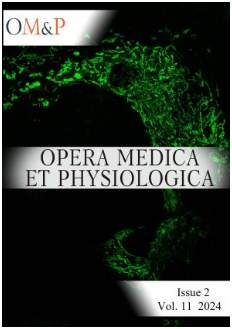Aberrant metabolism of neurovascular unit cells on Parkinson's disease

OM&P 2024 Volume 11 Issue 2, pages 90-107; doi:10.24412/2500-2295-2024-2-90-107
The focus of this review is on the study of aberrant metabolism in brain cells in Parkinson's disease. Parkinson's disease is the second most prevalent neurodegenerative disorder, characterized by the aggregation of the pathological protein α-synuclein, loss of dopaminergic neurons in the compact part of the substantia nigra, leading to a combination of motor and non-motor symptoms. While the hallmark motor symptoms of PD are well-documented, emerging research sheds light on intricate metabolic changes occurring at the cellular level, providing new insights into the pathophysiology of the disease. Studying the role of endogenous small molecules in protein-metabolite intermolecular interactions, conformational rearrangements of protein molecules, especially membrane receptors and transporters in regulating blood-brain barrier permeability, modulation of signaling transduction processes in neuroinflammation and neurodegeneration, remains pertinent.
Дата издания: 17.07.2024